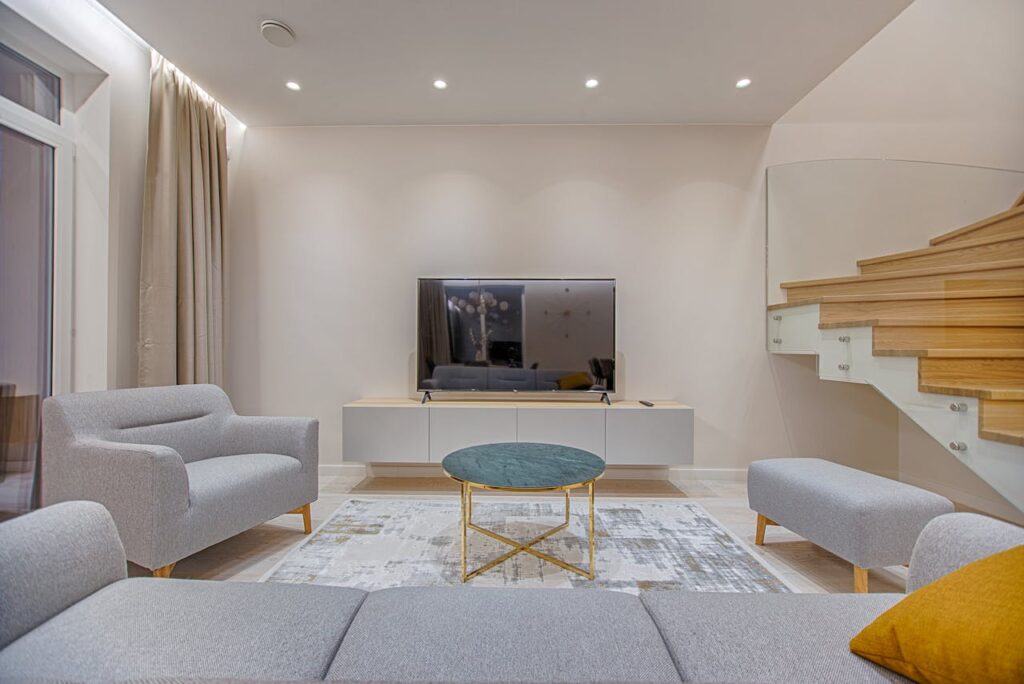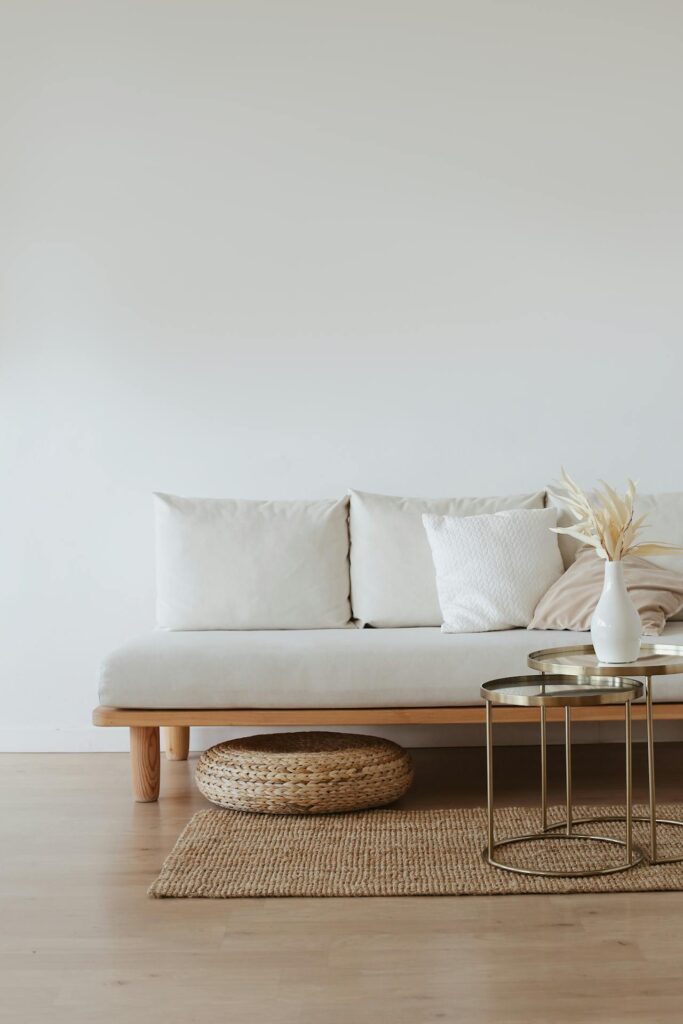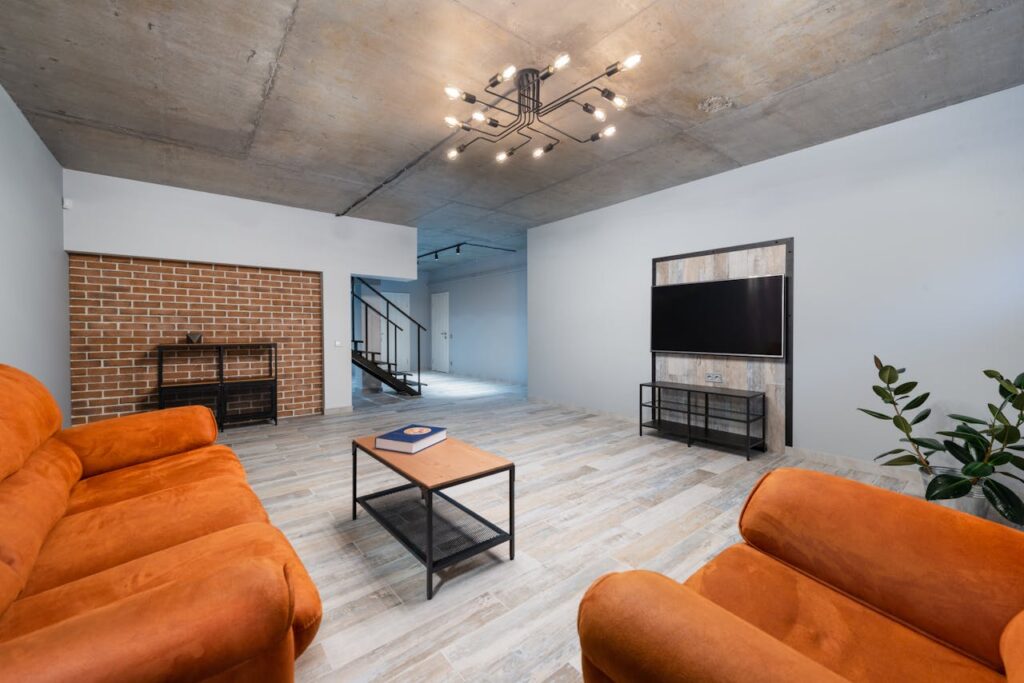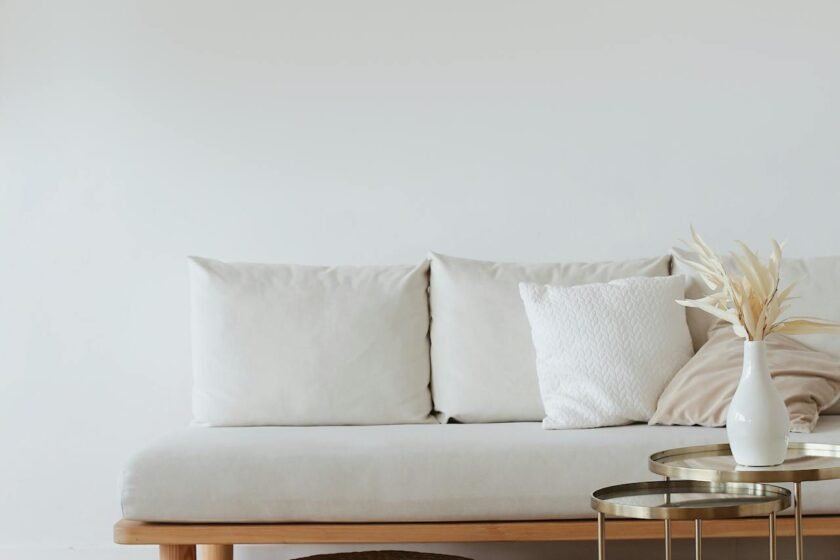Minimalist design is all about simplicity, clean lines, and intentional decor, but it can sometimes feel stark or uninviting if not done thoughtfully. The key to achieving a warm and balanced minimalist space is layering textures, incorporating subtle details, and choosing purposeful furnishings that add character while maintaining a clutter-free aesthetic.
Here’s how to style a minimalist space that feels sophisticated, inviting, and full of personality.
Creating Depth and Warmth in a Minimalist Space

Choosing a Neutral Yet Layered Color Palette
A minimalist space doesn’t have to mean an all-white room. While neutrals like white, beige, and gray are common in minimalist design, adding depth through different shades and undertones can create a more dynamic space. Consider warm neutrals, soft pastels, or earthy tones to add subtle contrast without overpowering the room. Layering similar hues can also prevent the space from feeling flat, making the design more engaging and welcoming.
Incorporating Texture for Visual Interest
One of the best ways to add warmth to a minimalist space is through texture. Soft textiles, woven fabrics, and natural materials can bring dimension without disrupting the clean aesthetic. Consider linen or wool throws, plush rugs, or textured wall art to add layers without clutter. Wood, stone, and matte finishes can also introduce a sense of depth and coziness while maintaining a modern and refined look.
Selecting Furniture with Subtle Character
Minimalist furniture should be sleek and functional, but that doesn’t mean it has to feel plain. Opt for pieces with unique silhouettes, soft curves, or sculptural details to create visual interest. A well-designed chair with a curved back, a table with an organic shape, or a bed frame with a natural wood grain can all enhance the space without disrupting the minimalist aesthetic.
Adding Purposeful Details Without Overcrowding

Using Statement Pieces Sparingly
A minimalist space thrives on intentionality, so instead of filling the room with multiple decorative items, focus on a few statement pieces that make an impact. A bold yet simple piece of art, a sculptural vase, or a uniquely shaped mirror can serve as a focal point without overwhelming the space. These elements add personality while still adhering to the principles of minimalism.
Styling Open Spaces with Balance
While negative space is a fundamental part of minimalist design, too much emptiness can make a room feel unfinished. Thoughtful placement of decor and furniture helps strike the right balance. Instead of pushing all furniture against the walls, try floating pieces slightly away from them to create a more natural flow. A well-placed bench, an understated bookshelf, or a carefully curated coffee table can enhance the room while keeping it airy.
Bringing in Nature for a Lively Touch
Adding greenery is an effortless way to make a minimalist space feel more inviting. A single, well-placed plant—such as a fiddle-leaf fig, snake plant, or monstera—can introduce organic shapes and fresh energy. Opt for minimalist planters in neutral tones to complement the space while maintaining cohesion. If you prefer low-maintenance options, dried pampas grass or sculptural branches can provide a similar effect.
Enhancing Minimalism with Light and Shadow

Maximizing Natural Light
Minimalist interiors look best when they are bright and open. Maximizing natural light can make a space feel more inviting while enhancing its simplicity. Use sheer curtains or light-filtering shades instead of heavy drapes to allow sunlight to flow freely. Position mirrors strategically to reflect light and make the space feel larger and more dynamic.
Layering Artificial Lighting
A well-lit minimalist space includes multiple sources of light to create warmth and avoid harsh contrasts. Combine ambient lighting (such as ceiling fixtures or recessed lights) with task lighting (like desk lamps or pendant lights) and accent lighting (such as wall sconces or LED strips) to add depth. Choose fixtures with clean lines and matte or metallic finishes to complement the minimalist aesthetic.
Creating Subtle Contrast with Shadows
Shadows can add dimension to a minimalist space, making it feel more organic and less rigid. Soft lighting, directional floor lamps, and diffused wall sconces can create subtle variations in brightness that enhance the depth of the room. Playing with contrasts—such as dark and light furniture or matte and glossy finishes—can also introduce intrigue without overwhelming the design.
Final Thoughts
A well-styled minimalist space balances simplicity with warmth by incorporating textures, statement pieces, and thoughtful lighting. By layering neutral tones, adding organic elements, and ensuring a dynamic arrangement of furniture and decor, you can create a minimalist home that feels inviting rather than empty. With an intentional approach, minimalism can be both aesthetically pleasing and deeply comfortable.

